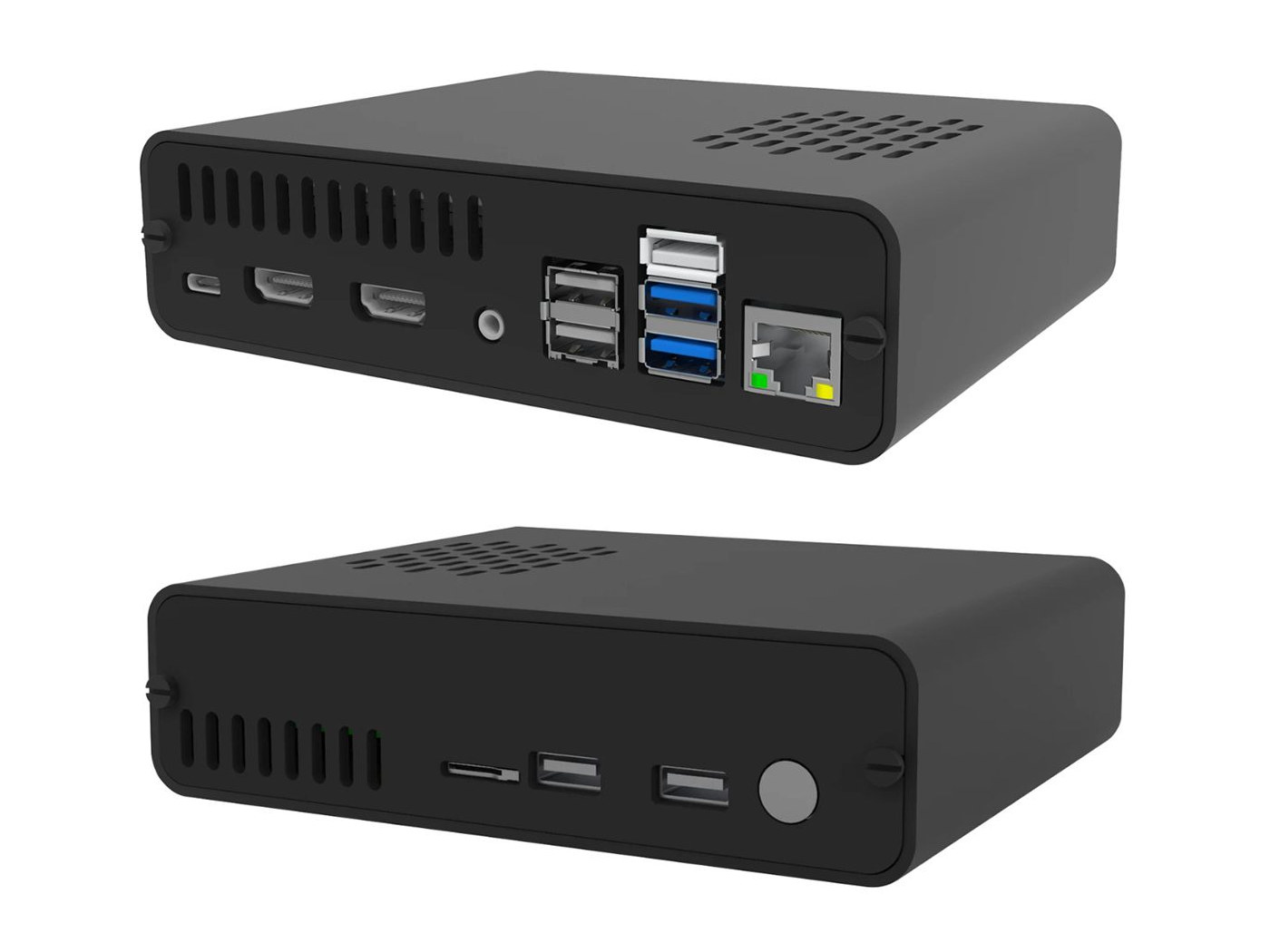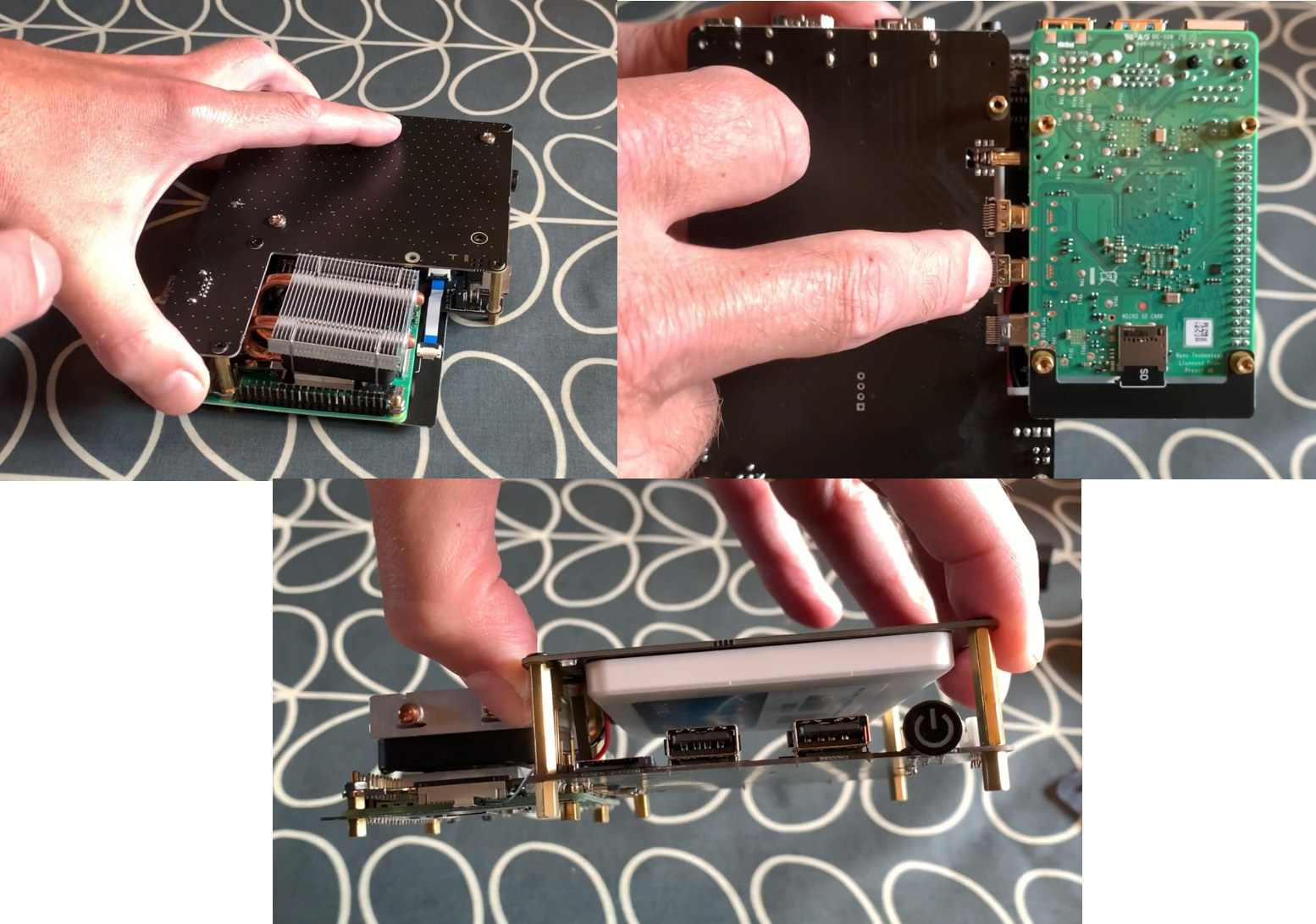If you’d like to connect a 2.5-inch SSD or hard drive disk to your Raspberry Pi 4, and are not a fan of the micro HDMI ports, DeskPi Pro enclosure might be what you are looking for.
The “Set-top Box” enclosure offers an alternative to the popular Argon One case, as it also re-arrange the ports in a more user-friendly way with most Raspberry Pi ports found on the rear panels, and the front panel adds an additional MicroSD card socket, plus two USB ports for a total of 6 USB ports, as well as a safe-shutdown & reset button.

DeskPi Pro is an NUC-style aluminum alloy enclosure with front and rear acrylic panels that ensure good Wi-Fi & Bluetooth signal strength. The case also houses a low-profile ICE Tower Cooler with PWM fan and air vents for both passive and active cooling. You’ll find the utility to control the fan on Github.

The 2.5-inch SATA slot is implemented via a USB 3.0 to SATA controller and can be enabled/disabled with a small dual-USB adapter. There’s an internal adapter board that converts the two micro HDMI port into two full-size HDMI ports with 4K support. The final version of the case will expose the 40-pin header externally on the rear panel.
A USB-C port enables PD 2.0 and QC 3.0 power input, and a QC 3.0 power supply is included with the enclosure, together with an instruction manual. DeskPi Pro is available for pre-order for $54.99 plus shipping on Seeed Studio, or directly on the official website. That means a complete system with Raspberry Pi 4 and MicroSD card should costs at least $100, with price going up depending on your selected HDD or SSD.

Jean-Luc started CNX Software in 2010 as a part-time endeavor, before quitting his job as a software engineering manager, and starting to write daily news, and reviews full time later in 2011.
Support CNX Software! Donate via cryptocurrencies, become a Patron on Patreon, or purchase goods on Amazon or Aliexpress




